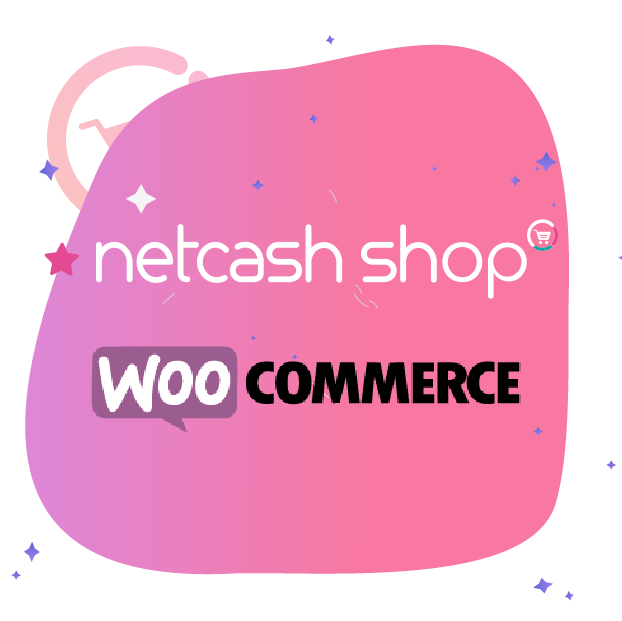
Logistics for eCommerce 101 | Getting products to your customers
May 24, 2023
eCommerce for retailers | Everything you need to know
June 19, 2023This in-depth guide presents all the tips and tricks you should know about selling and making money on social media. If you’re ready to start making passive income online, this guide has got you covered.
You’ll also learn how to monetise the various social media platforms and how to sell online without having a website. Finally, this guide takes you through the limitations of selling on social media.
Without further ado, let’s unpack the question, “How do you make money on social media?”
Index
How to make money from social media | Getting started

Before getting into the nitty-gritty details of making money from social media, it’s crucial to first understand the process of getting started. Follow these steps to ensure your social media business flourishes.
Find your niche
First things first, figure out what you are selling. Find a niche — a section of the market that focuses on a particular kind of product or service. To successfully sell on social media, you’ll need to find a target market that wants (if not needs) your product or service.
Here are four easy steps to find your niche:
1. Identify your interests, passions, or skills
Finding a niche that aligns with your interests or skills is the best way to start selling on social media. When you sell a product or service you love, you are less likely to give up when the money does not come as soon as you had hoped.
2. Look for problems to solve
The best way to find a winning product or service to sell is by solving a problem. Put yourself in the shoes of the person you are trying to sell to. Then ask yourself, “What problems am I facing and how can I solve them?”.
3. Research your competition
The existence of competitors in your niche market is not always a bad thing. For one, it means there is a demand for that product or service and the opportunity to make money. You will need to analyse the strengths and weaknesses of your competitors and then look for ways to capitalise on them.
4. Test and get feedback
You won’t know that you have a winning product or service without testing it. The best and easiest way to test your niche market is to set up a landing page and use paid advertising to drive traffic to the page.
Tip: Use A/B testing, as the feedback will help you choose the best user experience interface for your potential customer.
Learn the difference between social selling and social commerce
The monetisation of social media comes in various forms. You can use your influence and charisma to sell products or services on social media, but you can also use tools like a website, search engine optimisation (SEO), and Google Trends.
Understanding the two concepts above will help differentiate social selling and social commerce. Here’s a quick breakdown of both:
Social selling
Social selling is using social media to indirectly sell products or services to your customers. This requires developing genuine relationships with your potential customers and engaging them on a personal level. These connections are, therefore, your main sales driving factor.
Social commerce
In contrast, social commerce uses social media to directly sell your products or services to customers. This involves facilitating all steps of the online buying process, from browsing all the way to accepting and processing payments. Social commerce often requires a website.
Stay consistent
Last but not least, you have to stick to your niche. Customers would be very confused if you were selling apples today and bananas tomorrow. That’s why the steps of niche discovery above are crucial to making money with social media.
Choosing an ever-green product is also a great way to stay consistent with your niche. This is a product (or service) that you can sell throughout the year without any hindrances or considerations like seasons or public holidays.
7 Top ways to make money on social media in 2023

There are many ways you can make money with social media. This allows you to pick whichever way/s works best for you.
Some of these popular online marketing methods require active work, while others are 100% passive. Figuring out what techniques you’ll use to make money online will help in your goal setting as well as in creating your social media marketing strategy for your small business.
Keep reading to find out the top seven ways to make money on social media as well as some pros and cons of each method.
1. Sell your own products
Once you gain a sizable following, you can leverage that influence to sell digital products on social media. For example, if you are running a small accounting business, you can design and create digital products like monthly budgets or savings spreadsheets to sell to your followers.
Although this method of making money on social media requires more active participation, it gives you more control. You’ll have the final say on pricing, marketing, and the logistics of delivering the product.
Pros:
- You own the IP (intellectual property)
- You can replicate the product and resell it as many times as you want
Cons:
- You will need to invest heavily in marketing and advertising to get customers
2. Partner with relevant brands
Partnering with brands by creating niche-specific content or running campaigns is one of the most effective ways of making money online. This method is often referred to as being an “influencer”, but as a small business, it’s a good way to collaborate with other businesses operating within the same industry.
Promoting the products or services of other businesses is usually done through sponsored posts and campaigns. For example, an accounting business can partner up with a software company like Sage or Netcash in a campaign promoting a simple process of salary payments.
Partnering with relevant brands automatically shows your potential customers that you only work with brands that naturally align with your business model. Also, ensure you have made use of the products or services you promote and always offer value to customers.
Pros:
- You get to choose your own rates and fees (e.g., R500 per post)
- Collaborations with relevant brands increase your credibility as a leader in your industry
Cons:
- If you don’t have a large following (10,000+ followers), you will most likely have to approach the brands for a collaboration
3. Become an affiliate marketer
An affiliate marketer recommends third-party products or services to their audience and gets paid a commission when customers buy using their unique link or code. Affiliate marketing is one of the best passive ways to make money on social media.
Although the initial setup requires some legwork, becoming an affiliate marketer is your best bet for making money online while you sleep.
So there are three main ways you could become an affiliate marketer:
- Join an affiliate marketing network – this platform easily connects you (the affiliate marketer) with brands.
- Apply as an affiliate marketer for a specific company’s program – this is when you sign up to only promote and recommend products or services from one specific brand.
- Pitch your own affiliate terms – when you have a large following, you can negotiate your own rates with brands for long-term partnerships.
Whichever way you choose, affiliate marketing is arguably the best and easiest way to get paid to post on social media. You can start a side hustle or even a career as an affiliate marketer with literally no money.
Pros:
- You get to decide which brands (products or services) to promote
- You only need to post once but may have an unlimited amount of sales opportunities
Cons:
- Affiliate networks often have fees, a payout structure, and guidelines, so figuring out the final amount you’ll get paid can get a bit tricky
4. Join platform-specific monetisation programs
At first glance, joining platform-specific monetisation programs sounds like affiliate marketing wrapped in a fancy bow. But these two concepts are not entirely the same. A platform-specific monetisation program is an initiative by the social media platform (e.g., TikTok).
Social media platforms need creators (you) to keep users engaged so that brands will keep running ads; that is their basic business model. Therefore, social media platforms regularly launch new creator-friendly features to help you earn money.
Some examples of platform-specific monetisation programs include the TikTok Creator Fund, YouTube Partner Program, Instagram Subscriptions, and Pinterest Creator Rewards.
Pros:
- In-built features help you monetise a specific social media platform
- No third party is involved, so you’ll get paid directly by the platform
Cons:
- These programs usually pay low rates, e.g., with the TikTok Creator Fund, you can earn between $0.02 (R0.38) and $0.04 (R0.76) for every 1,000 views
5. Sell your expertise or skills
Similar to selling a product or service, selling your expertise requires a lot of work upfront, but it quickly becomes a passive income stream as you make sales. The biggest difference between selling products and your skills is that you don’t need to keep inventory for the latter.
Using the previous example of a small accounting firm, you can start a side business that offers training or coaching services to aspiring accountants. Other ways you can monetise your skills include hosting workshops, creating online courses, and writing e-books to sell.
Pros:
- No inventory (or stock on hand) required
- You can customise the experience for every customer
Cons:
- You must be an expert or highly skilled at what you are selling
6. Create a paid membership program
Another excellent method to make money with social media is a paid membership program for your followers. This entails creating exclusive content that is only available and accessible to followers who pay a recurring subscription, usually monthly.
But paid membership programs are not only limited to exclusive content. You can also offer your followers loyalty discounts, one-on-one virtual engagements, and early access to newly released content.
Pros:
- Recurring income from subscribers
- You will have access to funds you can use to improve overall content quality
Cons:
- Your membership program benefits and perks must be worth the subscription fee, if not worth more
7. Sell your own merchandise
Selling your own branded merchandise is another great way to make money using social media. However, this method, above all the others, requires a large number of followers who are loyal to your brand.
You can sell merchandise varying from practical items like apparel, USBs, mugs, and water bottles to mementoes and memorabilia like posters and keychains. While you do need a handful of loyal followers to start selling, you won’t need the capacity to produce it.
Pros:
- You can use print-on-demand companies to fulfil the order process
- You own the design and the rights to replicate and sell your merch
Cons:
- You will need a large (and loyal) following base to make sales
How to monetise social media platforms
 As mentioned in the post above, platform-specific monetisation programs are a fantastic way to make money from social media. In the next section, we dive deeper into the different social media platforms and how you can use each one to create income streams online.
As mentioned in the post above, platform-specific monetisation programs are a fantastic way to make money from social media. In the next section, we dive deeper into the different social media platforms and how you can use each one to create income streams online.
Facebook is the biggest social media platform, with over 2.958 billion active users worldwide, as per a report by Statista. That puts Facebook at the top of the pile as the platform with the most active users. It also places it among the top apps that customers spend most of their time on.
But before you can start making money on this platform, you must ensure your page and content align with Facebook’s Monetisation Eligibility Criteria.
These requirements are grouped into three distinct categories:
- Facebook Community Standards
- Partner Monetisation Policies, and
- Content Monetisation Policies
You can check your eligibility by going to your Content Studio and clicking on the Monetisation tab. Then select all the pages you would like to see your eligibility for.
Now that you’re eligible to monetise your content on Facebook look at these most common ways to make money from the platform.
Stars and gifts
Facebook Stars are a way to monetise different types of content, from video to image and text. You can receive stars and/or gifts from viewers, these are often a token of their appreciation for your content. The virtual gifts you receive equate to a certain number of stars, and you can earn about $0.01 (R0.19) for each star.
In-stream ads for video content
Running in-stream ads in your new or existing video content allows you to capture an audience that is already paying attention. Facebook naturally identifies breaks in the video content and then automatically places the in-stream ad. Choose where you would like the advertisement placed based on the types of in-stream ads. These are Pre-roll, Mid-roll, and Image ads.
YouTube
Slightly lagging behind Facebook with 2.514 billion active users, YouTube is the second-largest search engine in the world after its parent company, Google. But, outside of being a search engine, YouTube is also a high-traffic social media platform that can be easily monetised.
The YouTube Partner Program (YPP) allows you to place ads within your video content and hence generate income every time a viewer watches or clicks on the advertisement. You will then receive your payment via the Google AdSense program.
But there are certain criteria that you must consider. To join the YPP, you’ll need to have:
- 1,000 subscribers
- A minimum of 4,000 watch hours on your channel within the last 12 months, and
- Abide by YouTube’s Community Guidelines, Advertiser-friendly Content Guidelines and Terms of Service
While it’s not necessary to apply for the YPP as a small business owner, you can leverage the program’s Channel Membership feature to create exclusive content for customers willing to pay a recurring subscription fee.
Otherwise, you can simply rely on YouTube’s algorithm to advertise your business’ products or services to potential customers. You can use your YouTube channel to debut new offerings, make announcements, or run campaigns.

Instagram is one of the top social media platforms for small businesses, and it’s not surprising to see why. Like Facebook, you can monetise your Instagram via paid subscriptions, a shop, and more.
Subscriptions
Instagram subscriptions allow you to create and curate exclusive content for followers who pay a monthly fee. The exclusive content will be highlighted with a unique purple ring to differentiate it from others, while the paying followers get a subscriber badge next to the name to stand out.
Live badges
Although this is still a feature yet to be introduced to South Africa, it is definitely worth a mention. Instagram’s Live Badges allow viewers to purchase badges during a live video to support you or get recognition.
Instagram shop
You can start selling on Instagram in just a few steps. The great thing about selling on this platform is that you can connect a product catalogue from supported platforms like Facebook and from your website.
Once you’ve set up your shop on an Instagram Professional account, create a few posts featuring your products, and watch as the magic happens. You can read this guide on creating Instagram shopping posts that convert, to find ways to improve your content and increase monetisation.

People often call Pinterest the social media platform without the “social”, but that’s not to say that Pinterest does not have traffic. In fact, it has 445 million active users and is a great place to make money on social media.
You can make money on Pinterest by partnering with individual brands or via affiliate marketing. The latter is perhaps the most common way to make money on Pinterest, but you can also sell from your own store. You simply create shoppable pins by adding your product links to the Pinterest tags.
Tip: If you would like to sell products on Pinterest, read the Merchant Guidelines to make sure your business qualifies.
WhatsApp has over two billion active users, and although the majority of these people mostly use the platform to chat and connect with friends and family, some also use it to create an income.
With the introduction of WhatsApp Business a few years ago, many small and micro businesses have started selling products (and services) on the platform, and the results are astonishing.
However, WhatsApp allows you to make money using the platform in various ways. A few common ways people make money on WhatsApp include:
- Sharing short links (affiliate marketing products)
- Referrals (referring apps, products, or services to your contact list), and
- Pay per download
How to make money off social media without a website

When starting an online business, creating a website may be the first thing you think you need to do to start selling. That’s not true. While a website is a great asset to own, it can get pricey to build, not to mention the domain name and hosting costs.
Many people who own online businesses don’t know this, but social media is actually all you need to successfully sell your products or services. How? Keep reading to find out more about the various tools you can use to make money online.
Use e-commerce platforms
Netcash Shop and Shopify are bottom-up e-commerce platforms that allow you to build, grow, and successfully manage an online business. These platforms offer everything you’ll need to fulfil orders, like secure payment gateways.
You’ll also have access to apps, plugins, and Customer Relationship Management (CRM) tools which will assist you in keeping up with stock levels, delivery, and customer feedback.
Using an e-commerce platform instead of building or buying a website not only saves you time but also saves you money. These are fees you would have been liable to pay for things such as domain hosting and getting an SSL Certificate.
Use social media integrations
You can also sell your products or services from your Netcash Shop or Shopify on Facebook and Instagram. These platforms can seamlessly be integrated with your e-commerce platform within minutes. You can even integrate your Instagram Shop with Facebook and vice versa. This is one way you can boost sales on Instagram.
Use paid advertising integrations for Facebook and Instagram
The Netcash Shop is fully integrated with Facebook, Instagram, Mail Chimp, and even Google. This allows you to easily set up paid advertising campaigns and social media strategies for your small business. From the Netcash control panel, you can run paid ads across multiple platforms.
Use buy buttons
If you’re in the online business sector, you may be familiar with “call to actions” or CTAs. If not, you will in a few seconds.
A buy button is the ultimate call to action. This clickable button, usually placed slightly below the product or service, is highly convenient for potential buyers and ultimately drives more sales.
You can use these buy buttons across all social media and e-commerce platforms like Netcash Shop and Shopify.
Limitations for social selling in South Africa
Just to re-jog your memory, social selling entails indirectly selling a product or service to customers, usually via social media. This type of selling requires a large number of loyal followers who trust you and feel a personal connection to you.
Now, surely you’re starting to see how social selling could have limitations, especially in South Africa. As a developing country, e-commerce is a fairly new concept in SA. With that being said, social commerce has taken off in the country while social selling lags behind.
Have a look at the following limitations and considerations of social selling in South Africa:
- South Africans are still sceptical about the legitimacy and credibility of online shops.
- Some people do not trust the security of online payment gateway systems.
- People often prefer to see and touch products before they make a purchase, and while uploading images or videos of the items can help, it won’t leave the customer satisfied with the quality of the product.
- About 23.5% of the South African population does not have access to the banking system. This makes it challenging for these potential customers to undertake online transactions.
- Buying and selling on social media requires an internet connection, and SA has a 72% internet penetration rate. This leaves 28% without access to the internet and access to your products. It may seem small, but considering there are only about 60 million people, it is a lot.
- Online scammers are still a huge stumbling block between customers and making a purchase, and rightfully so. The Consumer Goods and Services Ombudsman (CGSO) works hard to look into matters of complaints by customers against suppliers.
How to make money with social media | Final thoughts
Making money on social media is one of the best ways to make passive income and hence generate revenue without having to work for 40 years. You can get paid to advertise on social media, whether it’s products or services from your own small business or other brands.
There are plenty of ways you can monetise your social media following. You could make money directly or indirectly, this will depend on what your niche is as well as the winning products you have identified.
Now that you have all the information you need to make money on social media, it’s time to set up and start selling anywhere and everywhere.
Contact us here to start selling and making money on social media.
Candice Sergeant is an experienced eCommerce Product Owner at Netcash, driving the growth strategy for SaaS e-commerce solutions in South Africa with global partner Ecwid by Lightspeed. Candice is skilled at uncovering opportunities to optimize the online presence and operations of startups and medium businesses across a range of industries.

Subscribe to our mailing list to learn about our new features and marketing tips & tricks.







